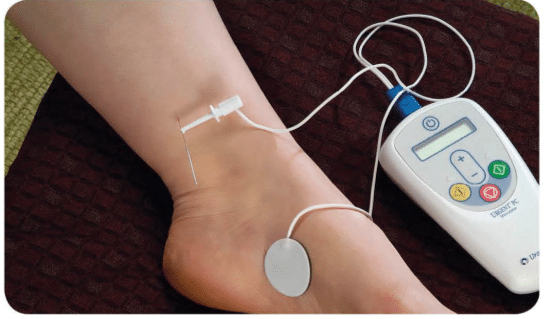Overactive Bladder (OAB) Syndrome
Definition of OAB Syndrome
rinary urgency with or without urinary urge incontinence (urine leaks before you reach the toilet). Usually with increased day and night urine frequency in the absence of urinary infection or other pathology.
This can be idiopathic OAB (when no specific cause found), or neurogenic OAB (when there is an underlying neurological condition such as Parkinson’s, Multiple Sclerosis, Stroke, spinal cord problems).
Risk Factors for OAB
- Age
- Obesity
- Constipation
- Pelvic organ prolapse
- Faecal incontinence
Investigations for OAB
- Bladder diary.
- Mid-Stream Urine test for Culture & Sensitivity
- Ultrasound scan (kidneys, ureters and bladder) with post-void residual volume assessment and flowrate
- Urodynamic study (before the second line treatment).
First Line Treatment
- Lifestyle adjustment & Fluid management
- Pelvic Floor exercise and bladder re-training.
- Anticholinergic drugs (Solifenacin, Fesoterodine, Trospium Chloride and Oxybutynin patches)
- Mirabegron tablet if anticholinergic drugs failed, not tolerated or contraindicated.
Lifestyle Adjustment:
- Fluid modification: High or low intake
- Tea & coffee reduction.
- Reduction of fizzy drinks and alcohol
- Weight loss
- Treat constipation
- Stop smoking
Indication for Second Line Treatment
- Failed lifestyle adjustment & anticholinergic medications (3 anticholinergic medications over a course of few months)
- Severe side-effects from anticholinergic tablets
- Contra-indications to anticholinergic medications
- Failed Mirabegron treatment
Second Line Treatment for Refractory OAB
According to NICE Guideline 2019, the second line treatment for refractory OAB should be:
- Intravesical BOTOX injection (Treatment available with Mr Hammadeh)
- Sacral Nerve Stimulation
- Percutaneous Tibial Nerve Stimulation: If the patient is reluctant to have Intravesical BOTOX or SNS(Treatment available with Mr Hammadeh)
Intravesical BOTOX injection
Indications:
- Failed 2-3 anticholinergic drugs over a period of a few months, or failed Mirabegron.
- Severe side effects of anticholinergic treatment.
- Contraindications for anticholinergic drugs
Is BOTOX effective?
- The effects of BOTOX usually takes between 3 days to 3 weeks to appear.
- Most patients find the effects of the injections last between six and nine months, although they can last longer. Repeated injections will be required each time the effects wear off.
Potential Side Effects:
- Blood in the urine.
- Urine infection.
- Difficulty in passing urine in 1 out of 6 patients and sometimes need for urethral self-catheterisation.
- These are some comments from my patients following intravesical BOTOX treatment:
- “Thank you so much for giving me my life back”
- “Absolutely brilliant – able to go on holiday and wear swimsuit with no worries”
- “I am amazed! The op was painless and now I have regained my confidence”
- “Botox has been life changing for me”
- “Life has reverted back to normality”
Percutaneous Tibial Nerve Stimulation (PTNS)
- Your posterior tibial nerve runs down your leg to your ankle and contains nerve fibres that start from the same place as nerves that run to your bladder.
- Stimulating the tibial nerve will affect these other nerves and help control bladder symptoms, such as the urge to pass urine.
- A very thin needle is inserted through the skin of your ankle and amild electric current is sent through it, causing a tingling feeling and causing your foot to move.
- PTNS is only recommended in a few cases where urge incontinence has not improved with medication and you don’t want to have BOTOX injections or sacral nerve stimulation.
- You will need 12 sessions of stimulation, each lasting around half an hour, one week apart. You may need top up treatment 3 weekly sessions every 3 months.

